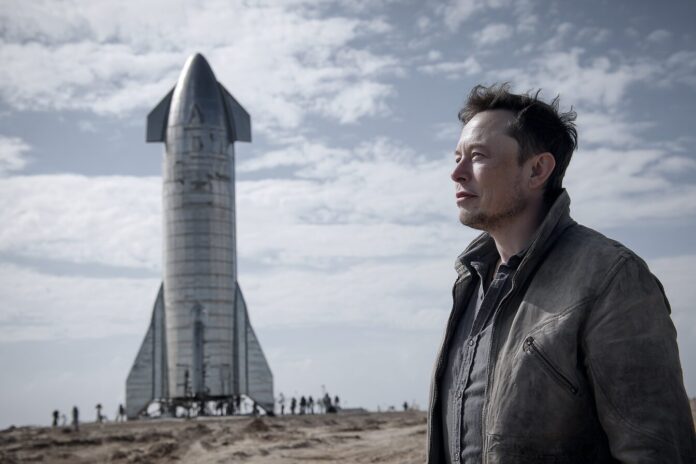Elon Musk Tries to Stick to Spaceships: Why SpaceX Remains the Center of His Vision
Elon Musk tries to stick to spaceships as his diverse business empire attracts the world’s constant attention. Over the past decade, Musk’s profile has soared beyond the realm of rockets, extending into electric vehicles, social media, artificial intelligence, and even neurotechnology. Most importantly, however, his enduring fascination with space remains the defining narrative of his career. Musk’s renewed focus on SpaceX not only signals a strategic retreat from headline-chasing distractions but also underscores the crucial role private innovation plays in humanity’s push to become a multi-planetary species.
SpaceX: Musk’s First Passion and Its Transformative Impact
Founded in 2002, SpaceX was never just another tech startup for Musk. It was the platform for realizing his vision of making space travel routine, affordable, and scalable. Early cynics doubted the prospects—because the space industry had long been dominated by governments and cost overruns. Yet, by consistently breaking cost barriers and engineering reusable rockets, SpaceX rewrote the rules. Its Falcon 9 rockets set industry records for reliability and turnaround time. Besides that, SpaceX’s cargo and crew missions to the International Space Station have proven the company’s ability to deliver on high-stakes contracts.
Recent Developments: Why 2024 Is Pivotal for SpaceX
This year, SpaceX hit major milestones that reinforced Musk’s need to double down. The NASA Artemis program’s reliance on SpaceX’s Starship for lunar landings has elevated the company’s global standing. In parallel, Elon Musk tries to stick to spaceships by reinvesting both capital and personal hours into Starship—a vehicle designed for Mars, but already transforming Earth-based launches. Starship’s latest test flights, especially the high-altitude hops and subsequent splashdown successes, prove SpaceX’s rapid learning cycle.
Moreover, Musk’s Starlink project continues to expand its global footprint. As of mid-2024, Starlink counts over three million active users, with coverage spanning remote regions no traditional infrastructure can reach. This connectivity solution has brought real change to underserved communities, disaster zones, and even affects geopolitics.
Stepping Back from Distractions: Delegating to Focus on Space
Managing high-profile companies requires intense dedication. Tesla’s electric vehicle breakthroughs, Neuralink’s brain-computer interfaces, and The Boring Company’s urban tunneling projects all demand executive oversight. Furthermore, Musk’s controversial involvement with X (formerly Twitter) made global headlines—sometimes eclipsing his achievements in space.
According to recent coverage by Reuters and CNBC, Musk has begun delegating more operational duties at his various companies. By appointing strong lieutenants and empowering senior leadership teams—such as Gwynne Shotwell at SpaceX and Tom Zhu at Tesla—Musk frees his schedule and mental bandwidth. Therefore, SpaceX’s pace of R&D has accelerated, with more test launches and rapid hardware iterations than ever before.
The Broader Context: Private Industry Leads the New Space Race
Besides that, the international stage is heating up. New competitors from China, India, and Europe race to stake claims in lunar and Martian exploration. As legacy agencies like NASA and ESA form partnerships with agile private players, SpaceX stands at the epicenter. Musk’s goal of reducing launch costs, establishing lunar refueling depots, and building eventual Martian settlements remains bold but increasingly plausible. Recent announcements have included planned private spaceflights and expanded government contracts, further solidifying SpaceX’s dominance in the sector.
Challenges Remain: Can Musk Keep the Focus?
Naturally, the realities of engineering, funding, and public relations present ongoing challenges. Testing new spacecraft sometimes means public flameouts and setbacks. Regulatory hurdles, environmental scrutiny, and supply chain issues can threaten timelines. Nevertheless, Musk’s resilience is well documented. Industry analysts and former NASA leaders agree: as Elon Musk tries to stick to spaceships, his unrelenting pursuit of solutions drives the field forward.
Why This Matters for the Future of Humanity
Most importantly, Musk’s renewed focus is more than a personal or corporate pivot. It reflects the broader truth that progress in space tech unlocks solutions on Earth—and may secure our species’ long-term survival. SpaceX’s work has already revolutionized satellite internet, GPS alternatives, and launch logistics. As the company chases ambitious goals like Mars base infrastructure, its technological spin-offs could enhance life on this planet as well.
Conclusion: All Eyes Back on the Stars
In summary, Elon Musk tries to stick to spaceships and signals a vital turning point for the tech visionary and the future of space travel itself. By filtering out distractions and consolidating leadership, Musk is positioning SpaceX—and by extension, all of us—for gigantic leaps in capability. Whether launching new satellites, sending people back to the Moon, or laying the foundations for Martian cities, Musk’s odds for history-making success increase every day he devotes to rockets and the cosmos.
The journey is far from over—if anything, it’s only just beginning.



